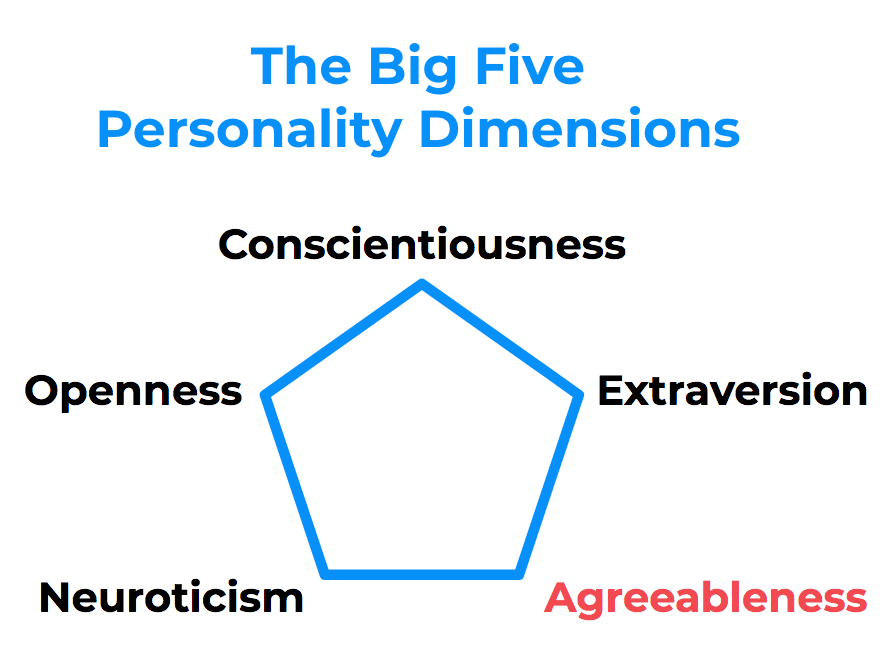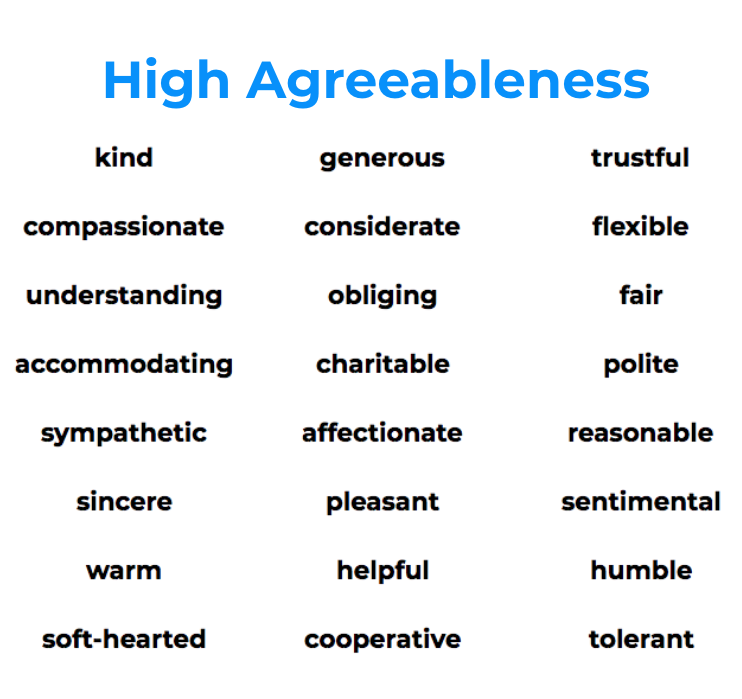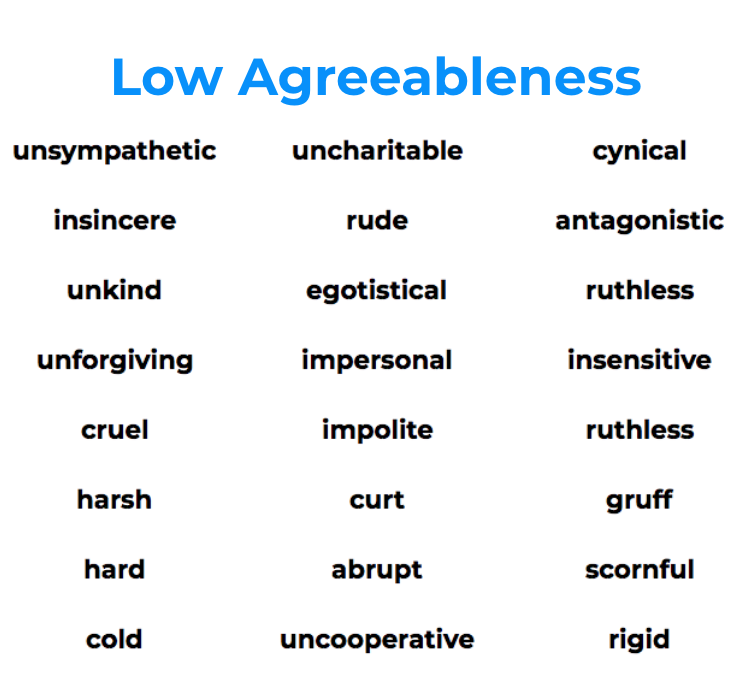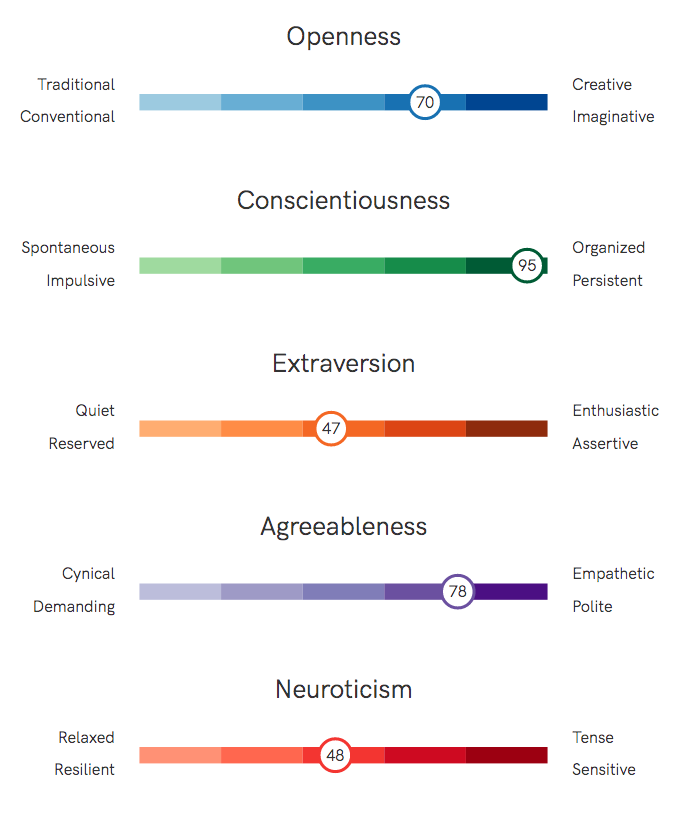Learn how the Agreeableness personality dimension is defined, how it influences behavior and relationships, and how it can be tested and measured
Reading time: 6 minutes

Gregory Park, Ph.D.
Author
Agreeableness is a broad personality dimension that closely tied to interpersonal relationships, including trust, empathy, and style of resolving conflicts.

At its core, Agreebleness describes the differences in our motivation to maintain positive relationships with other people. Before this social dimension became widely known as “Agreeableness”, researchers referred to it by a several different labels, including “social adaptability”, “likability”, “friendly compliance”, and “love”.1
Highly agreeable people are strongly motivated to maintain warmer and friendlier relations with others, seek to reduce or resolve interpersonal conflict, maintain or increase group cooperation, and control negative emotions around other people.

Less agreeable (or more demanding) people are more strongly motivated to pursue personal goals over positive relations with others, in doing so, are more willing to create conflict and disagreement, attempt to impose their will on others, and display or express negative emotions to others.

Agreeableness is one of the core personality dimensions measured by any of the Big Five assessments available at TraitLab. Try the free Big Five test to learn where you score on Agreeableness compared to others.
What does it mean to “maintain positive relationships” with others? One helpful way to think about Agreeableness is as a combination of two distinct aspects: Politeness and Compassion.2
Politeness is the more cognitive or rational side of Agreeableness, and it describes the tendency to consider other people’s needs and wants, apart from our own.
Compassion is the more emotional side of Agreeableness, describing interpersonal warmth and capacity to empathize with others (i.e., to “feel others’ emotions”).
Agreeableness predicts several kinds of relationship quality and stability, across a wide range of types of relationships. One recent study of relationship satisfaction found that more agreeable people were more satisfied with all types of personal relationships in their lives, including those with family members, friends, romantic interests, and even less familiar acquaintances.3
Research suggests that agreeable people tend to create and maintain positive relationships, even when being introduced to new environments and groups of people. In an 18-month study of new college students, more agreeable students had more daily social interactions, more opposite-sex peers, and fewer conflicts with opposite-sex peers.4
Similar patterns have been found in long term, romantic relationships. A separate meta-analysis of 13 studies found that Agreeableness predicted longer marriages and lower rates of divorce among married couples.5

How agreeable are you?
See an incredibly detailed analysis of your unique traits, strengths, and interests
Research suggests that Agreeableness is related to both our perception of conflict in our relationships and the techniques we tend to use to resolve them.
One series of experiments found that more agreeable people tend to see other people as more likable and friendly, and perceive less conflict in their interactions with others. Less agreeable people tend to rate the same people less positively and see more conflict in the same interactions.6
The same study found that, when faced with interpersonal conflict, more agreeable subjects favored using negotiation, compromising, and de-escalation to resolve the conflict. Less agreeable subjects were more likely to use criticism, physical action, or threats as tools for resolving the same conflicts.
In general, less agreeable people tend to perceive more interpersonal conflict and tension than highly agreeable people, even in the same relationships. Adding to that, less agreeable people are more likely to try resolving conflict by force or threats, which may create or increase relationship tension.
Agreeableness is included in the results the free Big Five test at TraitLab.
1 John, O. P., & Srivastava, S. (1999). The Big Five trait taxonomy: History, measurement, and theoretical perspectives. Handbook of personality: Theory and research, 2(1999), 102-138.
2 DeYoung, C. G., Quilty, L. C., & Peterson, J. B. (2007). Between facets and domains: 10 aspects of the Big Five. Journal of personality and social psychology, 93(5), 880.
3 Tov, W., Nai, Z. L., & Lee, H. W. (2016). Extraversion and agreeableness: Divergent routes to daily satisfaction with social relationships. Journal of personality, 84(1), 121-134.
4 Asendorpf, J. B., & Wilpers, S. (1998). Personality effects on social relationships. Journal of personality and social psychology, 74(6), 1531
5 Roberts, B. W., Kuncel, N. R., Shiner, R., Caspi, A., & Goldberg, L. R. (2007). The power of personality: The comparative validity of personality traits, socioeconomic status, and cognitive ability for predicting important life outcomes. Perspectives on Psychological science, 2(4), 313-345.
6 Graziano, W. G., Jensen-Campbell, L. A., & Hair, E. C. (1996). Perceiving interpersonal conflict and reacting to it: the case for agreeableness. Journal of personality and social psychology, 70(4), 820.